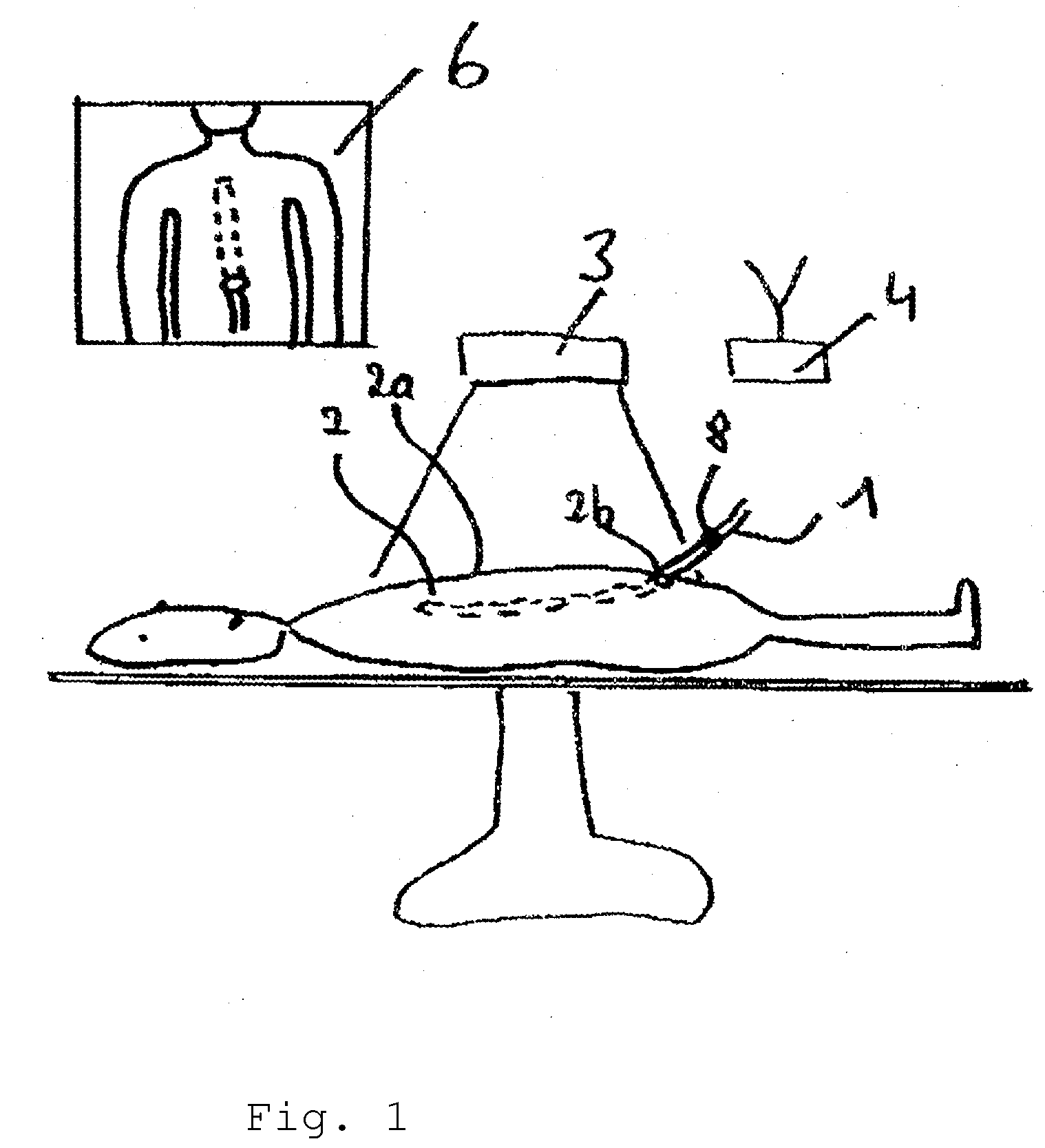System for orientation assistance and display of an instrument in an object under examination particularly for use in human body
a technology of orientation assistance and display, which is applied in the field of endoscopes, can solve the problems of high radiation exposure of patients and operating room personnel, inability to display the entire length of the instrument, and only being poorly captured, and achieves improved distal end area of the endoscope, improved operator orientation, and reliable information.
- Summary
- Abstract
- Description
- Claims
- Application Information
AI Technical Summary
Benefits of technology
Problems solved by technology
Method used
Image
Examples
Embodiment Construction
[0038]FIG. 1 shows an execution of the inventive system on the basis of a schematic display of a surgical situation in a body 2 of a patient. According to this embodiment, an endoscope 1 is inserted into a human body 2 in the area of the patient's navel. The endoscope extends in the interior of the body 2 from the navel to the area of the heart, where the distal end of the endoscope 1 comes to rest. It is precisely during the endoscopy process, that is, at the start of the insertion of the endoscope into a body opening (entry channel) and the advancing of the endoscope to the site of the occurrence of the illness, that the patient or the surface of the patient's body is captured by means of an extracorporeal video camera device 3. In the process, the video camera device 3 is positioned directly above the patient and is equipped with a corresponding lens, which makes it possible for the entire duration of the intervention to reliably capture the part of the surface of the patient tha...
PUM
 Login to View More
Login to View More Abstract
Description
Claims
Application Information
 Login to View More
Login to View More - R&D
- Intellectual Property
- Life Sciences
- Materials
- Tech Scout
- Unparalleled Data Quality
- Higher Quality Content
- 60% Fewer Hallucinations
Browse by: Latest US Patents, China's latest patents, Technical Efficacy Thesaurus, Application Domain, Technology Topic, Popular Technical Reports.
© 2025 PatSnap. All rights reserved.Legal|Privacy policy|Modern Slavery Act Transparency Statement|Sitemap|About US| Contact US: help@patsnap.com



